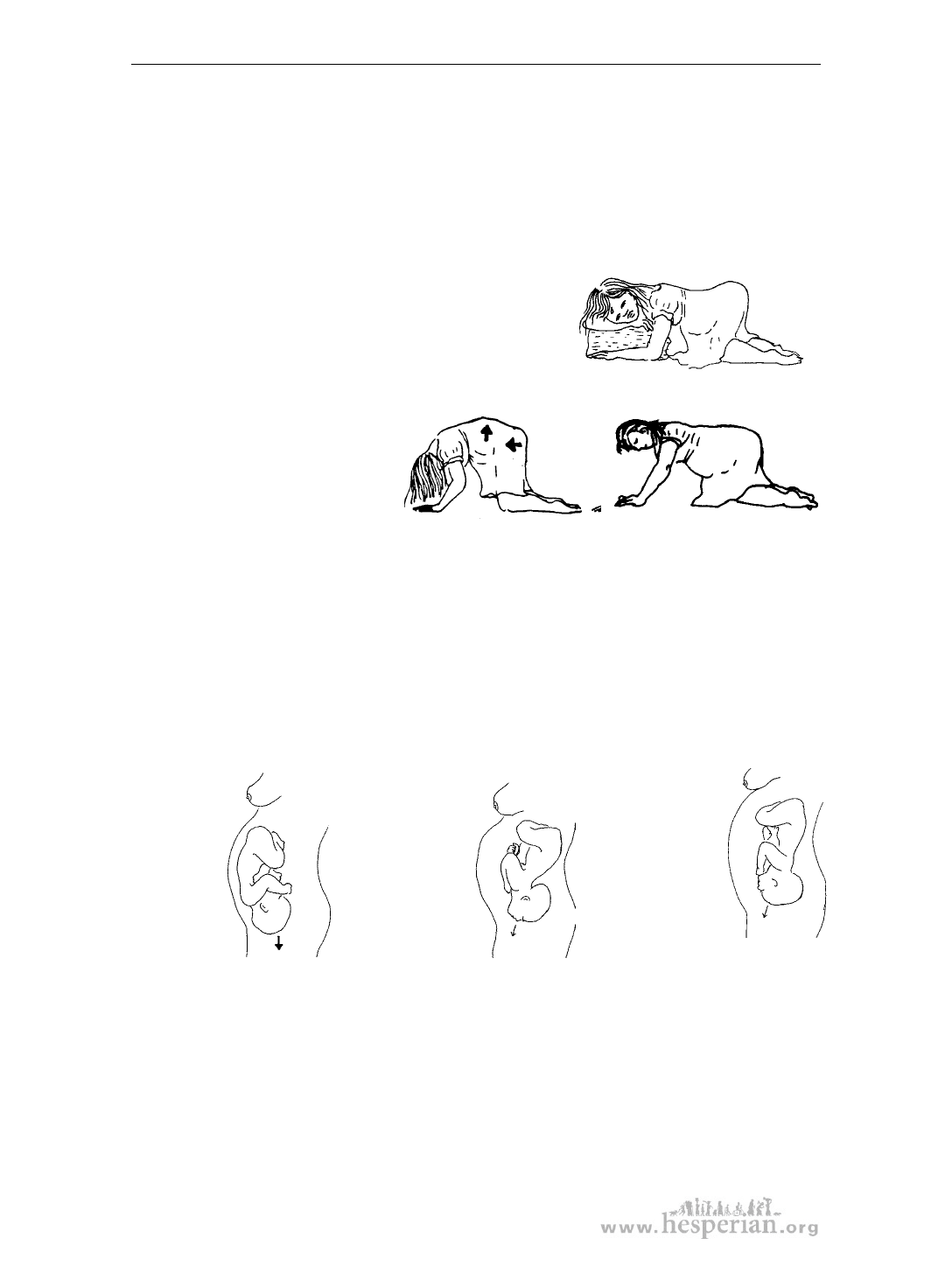
Chapter 11: Opening – stage 1 of labor
B aby is in a diffi cult o r impo ssible birth position
Labor is usually shortest when the baby is head down, facing the mother’s back. If
the baby is in another position she may be difficult or impossible to deliver.
Baby faces the mother’s stomach (posterior)
If a baby faces forward, she can often be born without problems, but the labor is
usually longer. You may want to use gentle methods to make the labor stronger
(see page 191). It may also help to:
• ask the mother to rest in a hands-and-knees
position for an hour or more. (It is OK if she
needs to walk and stretch her legs between
contractions.)
• have the mother do the
angry cat exercise
between contractions.
round back
straighten back
These positions can help
the baby to turn and face the
mother’s back.
angry cat exercise
Baby comes face first or forehead first
The way the baby holds her head can slow or prevent the birth.
If the baby is either face first or forehead first, it may be possible for her to be
born normally, but the birth will be much harder. Get medical help. Do not try to
change this baby’s position.
Most babies tuck their
heads in like this:
This makes it
easier for the
head to fit
through the
mother’s
pelvis.
But sometimes the baby is
face first:
This makes it
much harder
to fit through
the mother’s
pelvis.
This baby is
forehead first:
This baby
usually cannot
fit through
the mother’s
pelvis.
Baby is breech
Breech babies (bottom or feet first) often take longer to be born but if the baby is
early or small, the labor may go quickly. A breech position can be more dangerous
for the baby than head first. It may be possible to turn the baby (see page 369). If
you cannot safely turn the baby and you are not experienced with breech birth, get
medical help.
See page 215 to learn more about breech birth.
190
A Book for Midwives (2010)